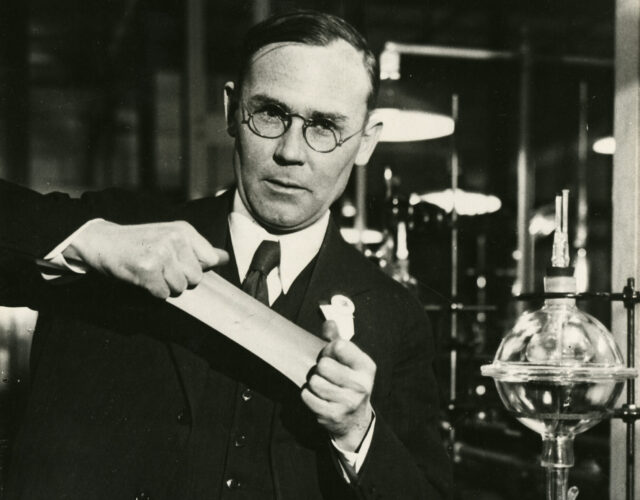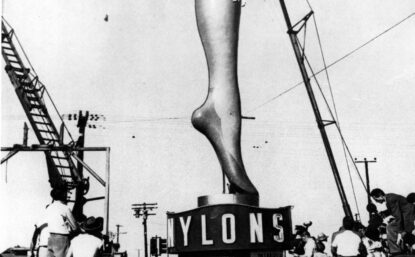Wallace Hume Carothers
Through his inventions of nylon and neoprene in 1930, Carothers helped demonstrate the macromolecular theory of polymers and establish the field of modern polymer science.

Two of the 20th century’s most widely used synthetic polymers—neoprene and nylon—originated in 1930 in the research laboratory of Wallace Hume Carothers at the DuPont Company. The research that led to these inventions also demonstrated the existence of macromolecules, greatly bolstering the macromolecular theory of Hermann Staudinger.

Early Work at DuPont
Carothers (1896–1937) attended Capital City Commercial College in Des Moines, Iowa, studying accountancy and secretarial administration. He then went on to Tarkio College in Missouri to complete a bachelor’s degree in chemistry. After a year of teaching at the University of South Dakota, he moved on to the University of Illinois, where he earned his doctorate in 1924, studying under Carl “Speed” Marvel and Roger Adams.
As a young instructor at Harvard University, Carothers was already pursuing research in polymers when DuPont’s Charles Stine recruited him for the fundamental research program Stine was then organizing. Elmer K. Bolton, Carothers’s immediate boss, asked Carothers to investigate the chemistry of an acetylene polymer that might lead to a synthetic rubber.
In April 1930 one of Carothers’s assistants, Arnold M. Collins, isolated a new liquid compound, chloroprene, which spontaneously polymerized to produce a rubberlike solid. The new polymer was similar chemically to natural rubber, which encouraged Bolton to exploit it. Neoprene, as the product was named, was superior to the natural product in some applications and became the first commercially successful, though never inexpensive, specialty rubber.
Amines: The Key to Nylon
Soon after this discovery another of Carothers’s associates, Julian W. Hill, created a strong, elastic synthetic fiber while trying to produce superpolymers of high molecular weight by reacting glycols and dibasic acids with strong acids under reduced pressure in a molecular still.
The resultant early polyesters, however, were problematic: they had such low melting points and high solubility in dry-cleaning solvents that they were not commercially viable. After a few attempts to solve these problems, Carothers discontinued this line of research.

But Bolton encouraged him not to give up on the wider field of fibers. When Carothers finally renewed work in that area in early 1934, he and his team used amines rather than glycols to produce polyamides rather than polyesters.
Polyamides are synthetic proteins and are more stable than polyesters, which are structurally similar to natural fats and oils. Carothers’s group soon discovered an outstanding polyamide fiber. Bolton played a key role in the development of the discovery, later named nylon.
Nylon: A Success Story
In the years that followed, Carothers’s scientific creativity was crippled by worsening bouts of depression that finally prompted his suicide in April 1937, just when the true magnitude of the discovery of nylon was becoming apparent. By this time Bolton had decided to commercialize nylon, setting his sights first on capturing the lucrative silk-stocking market with alternative products made from the synthetic fiber. Other applications would come later.
Nylon went into production in 1939, and the display of the new stockings was a sensation at the World’s Fair in New York City that year. With the onset of World War II, nylon was commandeered for war purposes—for example, to make parachute canopies. But once the war was over, sales to civilian consumers skyrocketed.






